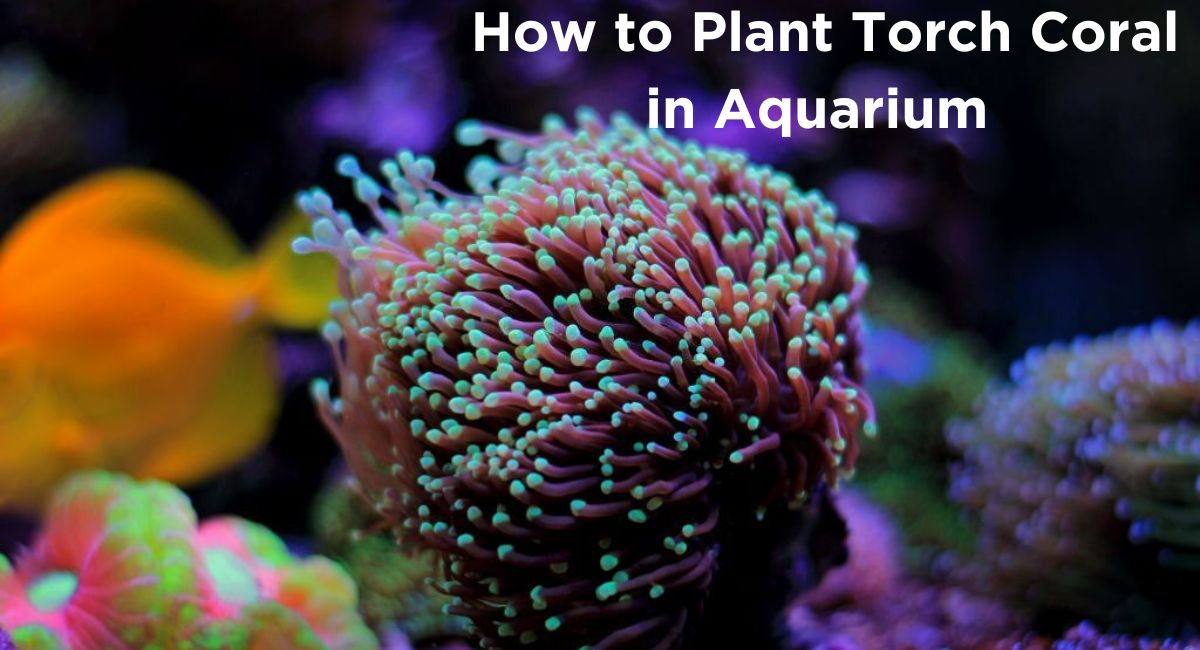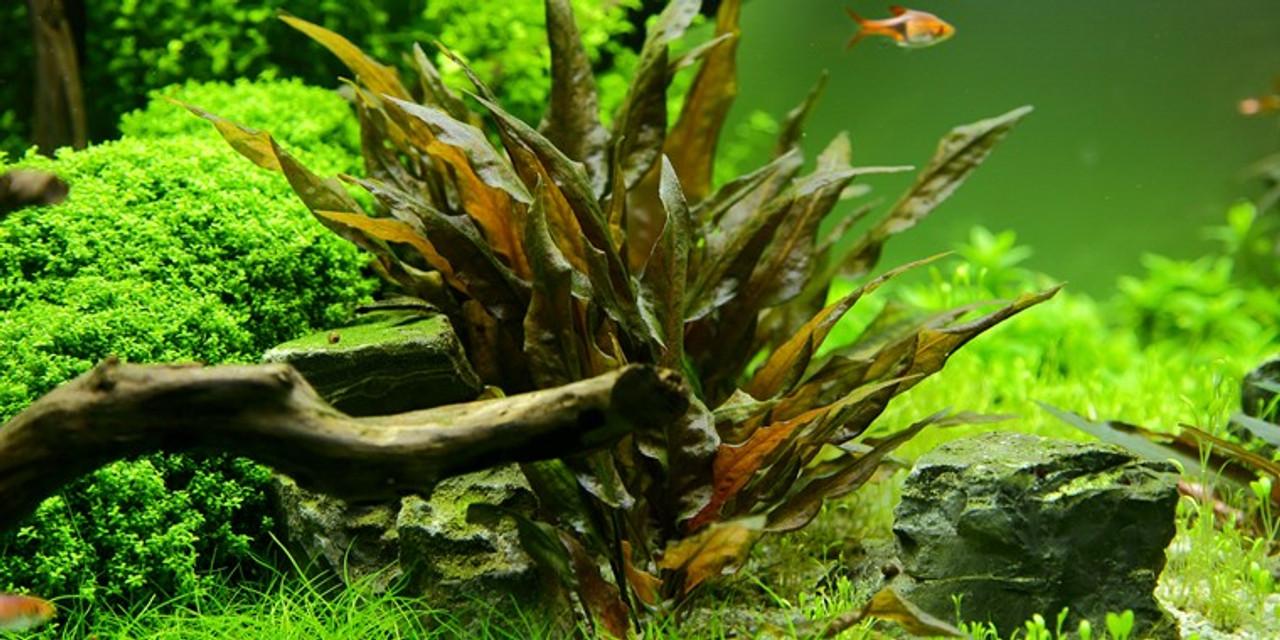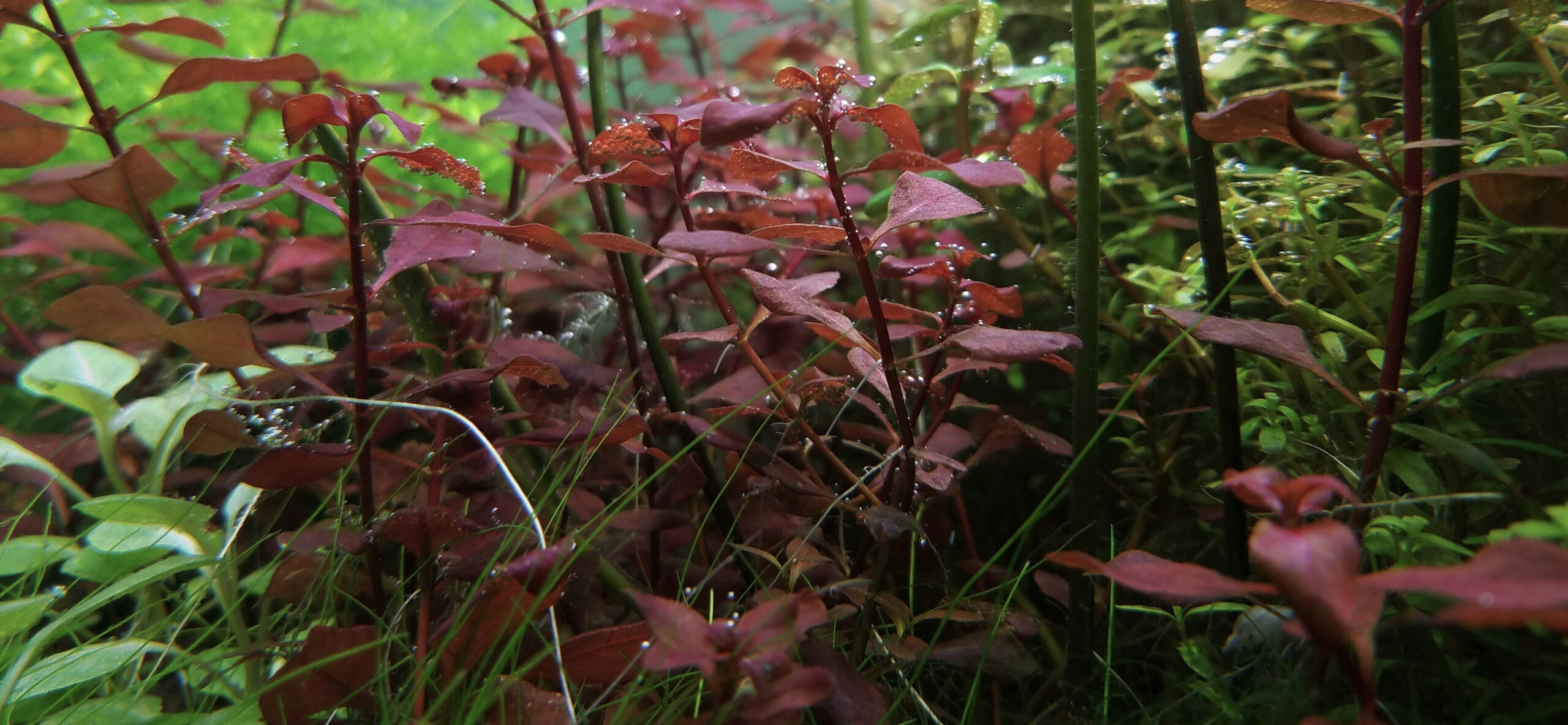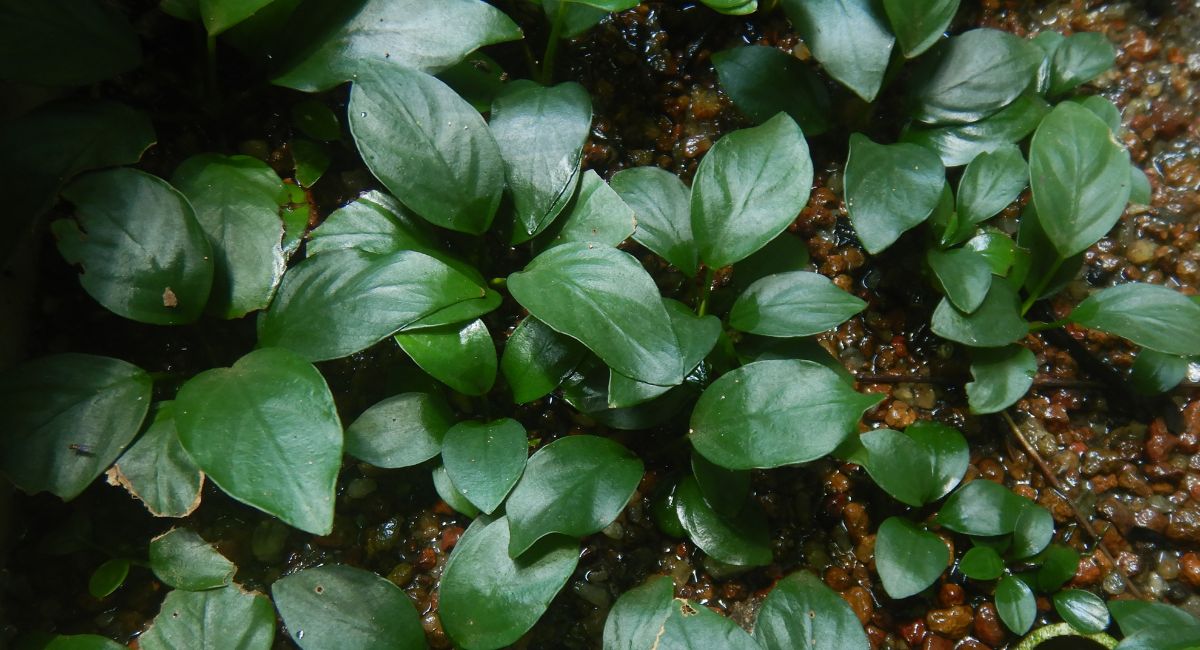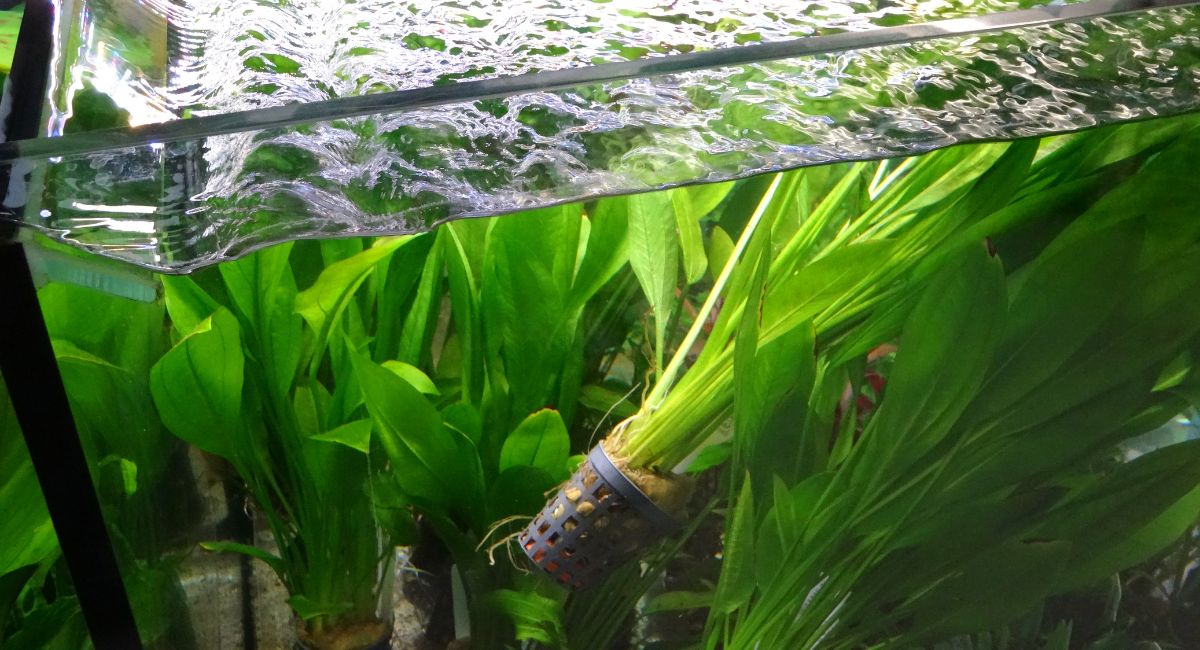Smartplantedaquarium.com participates in affiliate marketing programs. We may earn commissions on purchases made through our affiliate links. This doesn't affect our content or recommendations and we only recommend products we would put in our own tanks.
If you’re an avid reef-keeping enthusiast, you may already be familiar with the mesmerizing beauty of Torch Coral (Euphyllia glabrescens). With its long, flowing tentacles and vivid hues, this coral species is a delightful addition to any reef tank, instantly adding a touch of elegance and brilliance to the underwater landscape.
However, before you rush to introduce this stunning coral into your aquarium, it’s crucial to understand the intricacies involved in its care. Torch Coral, like any other living organism, demands specific conditions and attention to thrive in a captive environment. In this comprehensive guide, we will walk you through the essential steps to ensure the successful planting and care of Torch Coral in your aquarium.
Whether you are a seasoned reef-keeping veteran or just starting your aquatic journey, this article aims to equip you with the knowledge and know-how required to create a thriving habitat for Torch Coral. We will explore the coral’s natural habitat, lighting and water requirements, suitable tank placement, and the best practices for planting Torch Coral with care and precision.
Contents
Overview of Torch Coral
Description and Appearance:
Torch Coral (Euphyllia glabrescens) is a stunning and popular species of LPS (Large Polyp Stony) coral that graces marine aquariums with its alluring beauty. This coral species is known for its long, flowing, and torch-like tentacles, which give it its unique name. Its polyps extend during the nighttime, showcasing vibrant colors that range from shades of green, pink, and purple to sometimes even neon hues. Torch Coral’s captivating appearance makes it a focal point in any reef tank, attracting both beginners and experienced aquarists alike.
Origin:
Torch Coral is native to the Indo-Pacific region, including areas like Fiji, Solomon Islands, Indonesia, and other parts of Southeast Asia. In the wild, it can be found in shallow reef environments, usually positioned on rock ledges or sandy substrates, where it can receive optimal light and water flow.
Different Types of Torch Coral:
Within the Euphyllia genus, there are several variations and color morphs of Torch Coral. Some of the common types include:
- Standard Torch Coral (Euphyllia glabrescens): The classic Torch Coral variety features long, sweeping tentacles with vibrant coloration, ranging from green to pink and even red. It is widely available in the aquarium trade and remains one of the most sought-after corals for reef enthusiasts.
- Gold Torch Coral: This variation exhibits golden-colored tentacles, adding a touch of luxury and elegance to the reef tank. The golden hue can range from pale yellow to deep, rich gold tones, making it a striking addition to any marine aquarium.
- Dragon’s Breath Torch Coral: Also known as Dragon’s Eyes Torch Coral, this variant boasts a mesmerizing appearance with contrasting colors. Its base tentacles are usually green, while the tips develop a stunning deep red or pink color, creating a captivating visual effect.
- Branching Torch Coral (Euphyllia parancora): As the name suggests, this type of Torch Coral features branched tentacles, making it visually distinct from the standard Torch Coral. The branches give it a bushier appearance, adding a unique dimension to the reef tank.
- Grape Torch Coral: This captivating variation displays tentacles in shades of deep purple or violet, resembling the rich colors of ripe grapes. It stands out in reef aquariums and adds a splash of bold color to the overall underwater scenery.
Benefits of Keeping Torch Coral in Aquariums
Keeping Torch Coral (Euphyllia glabrescens) in aquariums offers numerous benefits for both the reef-keeping enthusiast and the overall health of the marine environment. Here are some of the key advantages of having Torch Coral in your aquarium:
| Benefits of Keeping Torch Coral in Aquariums |
|---|
| 1. Exquisite Beauty |
| – Vibrant colors and long, flowing tentacles |
| – Adds elegance and beauty to the aquarium |
| 2. Easy Care Requirements |
| – Hardy and suitable for both beginners and experienced |
| reef keepers |
| – Requires proper lighting, water quality, and flow |
| 3. Natural Behavior and Movement |
| – Polyps extend and sway with water flow |
| – Provides a dynamic and engaging display |
| 4. Encourages Biodiversity |
| – Supports other marine organisms to thrive |
| – Creates a balanced ecosystem in the aquarium |
| 5. Sense of Accomplishment |
| – Rewarding to witness growth and vitality |
| – Contributes to maintaining a thriving mini-reef |
| 6. Natural Filtration |
| – Acts as a filter feeder, consuming small particles |
| – Helps maintain water clarity and quality |
| 7. Educational Value |
| – Opportunity to learn about marine ecosystems and coral |
| – Raises awareness about reef conservation |
- Exquisite Beauty: Torch Coral is renowned for its stunning appearance and vibrant colors. Its long, flowing tentacles create an eye-catching display, making it a visually captivating addition to any reef tank. The coral’s vibrant hues, including shades of green, pink, purple, and sometimes even neon colors, add a touch of elegance and beauty to the underwater landscape, enhancing the overall aesthetics of the aquarium.
- Easy Care Requirements: Torch Coral is generally considered a hardy and relatively easy-to-care-for coral species, making it an excellent choice for both beginners and experienced reef keepers. As long as its basic needs are met, such as proper lighting, water quality, and appropriate water flow, Torch Coral can thrive in a well-maintained marine aquarium.
- Natural Behavior and Movement: Observing Torch Coral in the aquarium provides a unique and fascinating experience. The coral’s polyps extend during the nighttime, creating a mesmerizing display of movement as they sway with the water flow. This behavior adds life and dynamism to the tank, giving aquarium enthusiasts the opportunity to witness the natural rhythms of marine life up close.
- Encourages Biodiversity: Torch Coral creates a conducive environment for other marine organisms, such as small crustaceans and microorganisms, to thrive within its structure. This fosters biodiversity in the aquarium and supports the establishment of a balanced ecosystem. Additionally, other reef organisms might seek shelter among the coral’s branches, further enriching the aquarium’s biodiversity.
- Provides a Sense of Accomplishment: Successfully caring for Torch Coral and witnessing its growth and vitality can be incredibly rewarding for reef enthusiasts. It offers a sense of accomplishment and satisfaction, knowing that you are contributing to the well-being of a living organism and maintaining a thriving mini-reef ecosystem.
- Natural Filtration: Like many coral species, Torch Coral plays a role in the natural filtration of the aquarium. As a filter feeder, it consumes small particles and detritus from the water column, helping to maintain water clarity and overall water quality.
- Educational Value: Keeping Torch Coral in an aquarium provides an educational opportunity to learn about marine ecosystems, coral biology, and reef conservation. It fosters an understanding of the delicate balance within reef environments and raises awareness about the importance of protecting coral reefs in the wild.
Required Equipment and Supplies
To successfully maintain Torch Coral (Euphyllia glabrescens) in your aquarium, you’ll need the right equipment and supplies to create a suitable environment for its health and growth. Below is a list of the essential equipment and supplies you’ll need:
| Equipment & Supplies | Description |
|---|---|
| Marine Aquarium Tank | Appropriate size for Torch Coral and other inhabitants. |
| Filtration System | Mechanical, chemical, and biological filtration. |
| Protein Skimmer | Removes organic waste and dissolved compounds. |
| Lighting System | High-quality LED or T5 lighting for moderate to high lighting needs. |
| Water Circulation Pumps | Ensures gentle water flow for optimal feeding response. |
| Heater and Thermometer | Maintains stable water temperature (75°F – 80°F or 24°C – 27°C). |
| Reef Salt Mix | High-quality mix to prepare saltwater at the correct salinity. |
| Water Testing Kits | Monitor essential parameters like ammonia, nitrate, pH, etc. |
| Live Rock and Sand | Provides a stable foundation and promotes beneficial bacteria. |
| Powerheads | Improves water circulation and prevents dead spots. |
| Aquarium Hydrometer/Refractometer | Measures salinity accurately. |
| Aquarium Siphon and Bucket | Essential for regular water changes. |
| Coral Feeding Tools | Target-feed with small meaty foods occasionally. |
| Algae Magnet Scraper | Keeps aquarium glass clean from algae buildup. |
| Timer | Controls lighting schedule for day-night cycle. |
| R.O. Water Filtration System | Optional for producing pure, mineral-free water. |
- Marine Aquarium Tank: Select a marine aquarium tank that is appropriately sized for the Torch Coral you plan to keep. Consider factors such as the coral’s growth potential and the space required for other inhabitants.
- Filtration System: A reliable filtration system is crucial to maintain water quality and remove impurities. Consider a combination of mechanical, chemical, and biological filtration for optimal results.
- Protein Skimmer: A protein skimmer helps remove organic waste and dissolved organic compounds, promoting a cleaner and healthier aquarium environment.
- Adequate Lighting: Torch Coral requires moderate to high lighting conditions to thrive. Choose high-quality LED or T5 lighting systems with adjustable intensity to mimic natural lighting.
- Water Circulation Pumps: Provide adequate water flow to ensure the coral’s tentacles sway gently in the current. This encourages the coral to capture food particles efficiently.
- Heater and Thermometer: Maintain stable water temperature within the coral’s preferred range (typically 75°F to 80°F or 24°C to 27°C) using a heater and monitor it with a thermometer.
- Reef Salt Mix: Use a high-quality reef salt mix to prepare saltwater for your aquarium. Ensure it is mixed to the appropriate salinity level for coral growth (usually 1.024 to 1.026 specific gravity).
- Water Testing Kits: Invest in test kits to monitor essential water parameters such as ammonia, nitrite, nitrate, pH, alkalinity, and calcium. Regular testing ensures a stable and healthy environment.
- Live Rock and Sand: Provide a stable foundation for your coral and promote beneficial bacteria growth by using live rock and live sand.
- Powerheads: Additional powerheads can be used to improve water circulation and prevent dead spots in the aquarium.
- Aquarium Hydrometer or Refractometer: To measure salinity accurately, use an aquarium hydrometer or a more precise refractometer.
- Aquarium Siphon and Bucket: Regular water changes are essential to maintain water quality. Use an aquarium siphon and bucket for easy water changes.
- Coral Feeding Tools: Torch Coral is a mix of photosynthetic and heterotrophic feeding. Have feeding tools on hand to target-feed the coral with small meaty foods occasionally.
- Algae Magnet Scraper: Keep the aquarium glass clean with an algae magnet scraper to remove algae buildup.
- Timer: Use a timer to control the lighting schedule and maintain a consistent day-night cycle.
- R.O. Water Filtration System: Consider an R.O. (Reverse Osmosis) water filtration system to produce pure, mineral-free water for top-offs and water changes.
How to Plant Torch Coral in Aquarium
Planting Torch Coral (Euphyllia glabrescens) in your aquarium requires careful consideration to ensure its successful acclimation and growth. Below are the steps to plant Torch Coral, along with three points to follow for each step:
Step 1: Prepare the Aquarium Environment
- Select an Ideal Location:
- Choose a spot in the aquarium that provides moderate to high light intensity. Torch Coral needs sufficient light for its photosynthetic process and to maintain its vibrant colors.
- Ensure the location experiences gentle water flow. Placing the coral in an area with proper water movement prevents detritus accumulation and promotes nutrient uptake.
2. Water Parameters:
- Maintain stable water parameters, including temperature, salinity, pH, and alkalinity, within the recommended range for Torch Coral (75°F to 80°F or 24°C to 27°C, specific gravity of 1.024 to 1.026).
- Regularly test water quality using appropriate test kits to ensure optimal conditions for coral growth and overall tank health.
3. Prepare the Substrate:
- Place a layer of live sand or substrate at the bottom of the aquarium to create a stable foundation for the coral to attach itself.
- Arrange live rock or other stable structures in the desired location to act as an anchor for the coral.
Step 2: Acclimate the Torch Coral
- Drip Acclimation:
- Perform a slow drip acclimation to help Torch Coral adjust to the new aquarium conditions gradually.
- Drip water from the aquarium into a container with the coral for about 1-2 hours, slowly adjusting the water parameters.
2. Inspect for Pests:
- Before introducing the coral to the tank, carefully inspect it for any hitchhikers or pests that might harm the coral or the existing tank inhabitants.
- Quarantine the coral if necessary to ensure no unwanted pests are introduced to the main tank.
3. Turn Off Pumps:
- During acclimation, turn off water circulation pumps to prevent any damage to the coral’s delicate tissue from strong water flow.
Step 3: Securely Place the Torch Coral
- Gently Attach the Coral:
- Carefully place the Torch Coral onto the live rock or substrate in the selected location.
- Use aquarium-safe epoxy or putty to secure the base of the coral to the rock or substrate if necessary. Avoid damaging the coral’s tissue.
2. Give Space for Growth:
- Allow sufficient space between the Torch Coral and other corals to prevent aggressive interactions and ensure proper growth without crowding.
- Consider the coral’s potential growth and expansion when deciding its placement in the aquarium.
3. Monitor and Observe:
- After planting, closely monitor the coral’s response and behavior in the new environment.
- Observe its tentacle extension, coloration, and overall health to ensure it is adapting well to the tank.
Certainly! Here are four additional steps to further guide you on how to plant Torch Coral (Euphyllia glabrescens) in your aquarium:
Step 4: Water Quality and Maintenance
- Maintain Stable Water Parameters:
- Ensure the water parameters remain consistent over time, as sudden fluctuations can stress the coral and negatively impact its health.
- Monitor and adjust the temperature, salinity, pH, and nutrient levels regularly to maintain a stable and healthy environment.
2. Regular Water Changes:
- Perform routine water changes to remove accumulated pollutants and maintain pristine water quality.
- Regular water changes also replenish essential trace elements and minerals necessary for the coral’s growth.
3. Keep the Aquarium Clean:
- Regularly remove debris and excess algae from the aquarium to promote optimal coral health.
- Maintaining a clean environment reduces the risk of algae overgrowth, which can negatively impact Torch Coral and other inhabitants.
Step 5: Lighting and Photoperiod
- Lighting Schedule:
- Establish a suitable lighting schedule for your aquarium to mimic natural daylight cycles.
- Adjust the photoperiod to provide 8-10 hours of light each day, allowing the Torch Coral to undergo its natural diurnal behaviors.
2. Gradual Light Adjustment:
- When introducing the coral to the aquarium or changing the lighting intensity, acclimate it gradually to prevent shock or tissue damage.
- Start with lower light intensity and increase it slowly over several weeks to help the coral adjust.
3. Avoid Direct Light:
- While Torch Coral requires moderate to high lighting, avoid placing it directly under powerful light sources to prevent excessive light exposure and potential bleaching.
- Invest in high-quality lighting fixtures specifically designed for reef aquariums to ensure the proper spectrum and intensity required for healthy coral growth.
Step 6: Coral Health and Monitoring
- Observe Polyp Extension:
- Healthy Torch Coral will exhibit full polyp extension, especially during the nighttime when they actively feed.
- Ensure the coral’s tentacles are fully extended and not retracting excessively, which could indicate stress or poor conditions.
2. Monitor Coloration:
- Regularly observe the coloration of the coral, as vivid and vibrant colors indicate a healthy and thriving specimen.
- Paleness or discoloration may suggest inadequate lighting, improper water parameters, or nutrient deficiencies.
3. Address any Issues Promptly:
- If you notice any signs of distress, such as tissue recession, loss of color, or declining health, investigate and address the issue promptly.
- Identifying and resolving problems early can prevent further complications and improve the coral’s chances of recovery.
Mistakes to Avoid When Planting Torch Coral
When planting Torch Coral (Euphyllia glabrescens) in your aquarium, it’s essential to be mindful of certain mistakes that can negatively impact the health and well-being of the coral. Avoiding these mistakes will help ensure a successful and thriving environment for your Torch Coral. Here are some common mistakes to avoid:
Insufficient Acclimation Time:
Mistake: Rushing the acclimation process can shock the Torch Coral, leading to stress, tissue damage, or even death.
Solution: Take the time to acclimate the coral gradually, allowing it to adjust to the new aquarium conditions over several hours.
Placing Coral in High-Flow Zones:
Mistake: Positioning the Torch Coral in an area with strong water flow can cause its delicate tentacles to constantly sway and potentially become damaged.
Solution: Choose a location in the aquarium with moderate water flow to allow the coral’s tentacles to sway gently without excessive stress.
Improper Lighting Intensity:
Mistake: Providing too much or too little light can lead to bleaching, tissue recession, or poor growth in Torch Coral.
Solution: Research the specific lighting requirements of Torch Coral and adjust the intensity gradually to suit its needs. Invest in high-quality lighting fixtures suitable for reef aquariums.
Neglecting Water Quality:
Mistake: Ignoring water quality and parameters can lead to nutrient imbalances, high levels of dissolved pollutants, and reduced coral health.
Solution: Regularly test and maintain stable water parameters, perform water changes, and utilize proper filtration systems to ensure pristine water quality.
Overcrowding and Aggressive Neighbors:
Mistake: Planting Torch Coral too close to aggressive corals or overcrowding it with other inhabitants can lead to territorial disputes and stunted growth.
Solution: Provide ample space between Torch Coral and other corals, ensuring they have enough room to expand and grow without interference.
Inadequate Feeding:
Mistake: Relying solely on photosynthesis without offering supplemental feeding can lead to nutrient deficiencies and diminished health in Torch Coral.
Solution: Target-feed the coral occasionally with small meaty foods like microplankton or brine shrimp to supplement its nutrition.
Neglecting Pest Inspection:
Mistake: Introducing Torch Coral without inspecting for hitchhikers or pests can lead to infestations that harm the coral and the entire aquarium.
Solution: Quarantine the coral if necessary, and carefully inspect it for any unwanted organisms before introducing it to the main tank.
Excessive Physical Handling:
Mistake: Handling Torch Coral excessively or roughly can damage its delicate tissue and stress the coral.
Solution: Handle the coral with care, minimizing physical contact, and avoid poking or prodding it.
Ignoring Early Signs of Distress:
Mistake: Ignoring signs of distress, such as paleness, tissue recession, or loss of polyp extension, can lead to further complications.
Solution: Be observant and address any issues promptly, investigating and resolving problems to improve the coral’s chances of recovery.
How to Use Torch Coral for Aquascaping
Using Torch Coral (Euphyllia glabrescens) for aquascaping can add a focal point of beauty and movement to your marine aquarium. When incorporating Torch Coral into your aquascape, consider the following tips to ensure a visually appealing and functional arrangement:
| Aquascaping Tips for Torch Coral | Description |
|---|---|
| Placement as a Centerpiece | – Choose a central focal point for Torch Coral |
| – Place it on a prominent rock or elevated platform | |
| – Ensure sufficient lighting and water flow for vibrant appearance | |
| Creating Height and Dimension | – Position Torch Coral to showcase its upward-reaching tentacles |
| – Adds a vertical element, creating height and dimension | |
| Grouping with Other Corals | – Combine Torch Coral with compatible soft or small LPS corals |
| – Create a visually appealing and diverse coral community | |
| – Mind the spacing to prevent aggressive interactions | |
| Contrasting Colors and Textures | – Consider the coral’s color and texture when choosing other elements |
| – Contrast vibrant colors with neutral-colored rocks or substrate | |
| – Incorporate various coral types for textural variety | |
| Use Negative Space Wisely | – Utilize negative space for visual balance and harmony |
| – Leave open areas around Torch Coral for ample expansion | |
| Natural Rock or Driftwood Placement | – Use stable live rock or driftwood as a secure base for the coral |
| – Avoid loose or unsteady substrates to prevent toppling | |
| Consider the Coral’s Growth Potential | – Research and understand Torch Coral’s growth habits |
| – Plan its placement to allow for vertical and horizontal growth | |
| Maintain Visual Balance | – Step back to assess the overall aquascape appearance |
| – Adjust Torch Coral and other elements for a pleasing arrangement |
- Placement as a Centerpiece: Torch Coral is an excellent choice for a central focal point in your aquascape. Place it on a prominent rock or elevated platform where it can be easily seen and admired. Ensure that the chosen location provides sufficient lighting and water flow, as this will enhance the coral’s vibrancy and encourage its tentacles to sway gracefully.
- Creating Height and Dimension: Position the Torch Coral in a way that allows it to reach upward, showcasing its long, flowing tentacles. This creates a vertical element in the aquascape, adding height and dimension to the overall design.
- Grouping with Other Corals: Combine Torch Coral with other compatible corals, such as soft corals, small LPS (Large Polyp Stony) corals, or encrusting corals, to create a visually appealing and diverse coral community. Pay attention to the spacing between corals to prevent aggressive interactions and allow for growth.
- Contrasting Colors and Textures: Consider the color and texture of the Torch Coral when selecting other elements for the aquascape. Contrast the coral’s vibrant colors with neutral-colored rocks or substrate to make it stand out. Additionally, combine different types of corals to add textural variety to the arrangement.
- Use Negative Space Wisely: Utilize negative space in the aquascape to create a sense of balance and visual harmony. Leave some open areas around the Torch Coral to provide it with ample room for expansion and prevent overcrowding.
- Natural Rock or Driftwood Placement: If using live rock or driftwood in the aquascape, ensure they are stable and can act as a secure base for the Torch Coral. Avoid placing the coral on loose or unsteady substrates that might cause it to topple or shift.
- Consider the Coral’s Growth Potential: Research the growth potential of the Torch Coral and plan its placement accordingly. Allow sufficient space for its growth, both vertically and horizontally, to prevent crowding with other corals.
- Maintain Visual Balance: Step back and assess the overall visual balance of the aquascape. Adjust the placement of the Torch Coral and other elements as needed to achieve a harmonious and visually pleasing arrangement.
Conclusion
Planting Torch Coral (Euphyllia glabrescens) in your aquarium can be a rewarding and captivating experience. As a centerpiece coral, it adds a mesmerizing display of long, flowing tentacles that sway gracefully, capturing the attention of any onlooker. However, successful cultivation of Torch Coral requires careful attention to its specific needs and the right environment to thrive.
To ensure the health and vibrancy of your Torch Coral, consider factors such as lighting, water flow, water quality, and feeding. Providing moderate to high lighting levels, stable water parameters, and proper water circulation are crucial for its well-being. Additionally, supplementing its photosynthetic diet with occasional target feeding of small meaty foods will enhance its growth and nutritional intake.
Remember to maintain visual balance and utilize negative space wisely to allow your Torch Coral ample room for growth and expansion. Ensuring a stable and harmonious environment with appropriate tankmates will foster a thriving reef ecosystem.
With dedication and a passion for marine aquatics, you can create a stunning underwater landscape where the Torch Coral takes center stage, showcasing the wonders of the ocean within the confines of your own aquarium. Happy reef-keeping and may your Torch Coral flourish in its aquatic sanctuary!
Frequently Asked Questions
1. What are the best companion plants for Torch Coral?
Torch Coral (Euphyllia glabrescens) is a type of LPS (Large Polyp Stony) coral and is best kept in a dedicated saltwater reef tank. As corals are not plants, they do not have companion plants. However, you can create a visually appealing reef tank by combining various types of corals with different colors, shapes, and sizes.
2. What are the best tank mates for Torch Coral?
Torch Coral can coexist with other peaceful reef inhabitants, such as soft corals, LPS corals, and some small reef-safe fish species. Compatible tank mates include clownfish, gobies, blennies, and certain shrimp and snail species. Avoid aggressive fish and invertebrates that may damage the delicate polyps of the coral.
3. How fast does Torch Coral grow?
The growth rate of Torch Coral can vary depending on the specific conditions in the reef tank. Under optimal conditions with appropriate lighting, water quality, and nutrient levels, it can grow at a moderate pace, adding new polyps and extending its tentacles over time.
4. How big does Torch Coral grow?
Torch Coral can grow to a size of around 6 to 10 inches (15 to 25 centimeters) in height and diameter. It forms long, flowing polyps that give it a torch-like appearance, hence its name.
5. Is Torch Coral suitable for beginners?
Torch Coral is not recommended for beginners. It requires stable and pristine water conditions, proper lighting, and regular water testing. Additionally, successful care for LPS corals like the Torch Coral often involves more advanced reef-keeping skills, such as target feeding and understanding water chemistry.
6. Is Torch Coral suitable for a low-tech aquarium?
Torch Coral is not suitable for a low-tech aquarium. Corals, especially LPS corals like the Torch Coral, have specific requirements for light intensity, water flow, and water quality. To maintain the health and growth of the coral, a well-equipped reef tank with appropriate lighting, filtration, and water circulation is necessary. A low-tech aquarium typically lacks the necessary equipment to support the needs of coral growth and survival.
